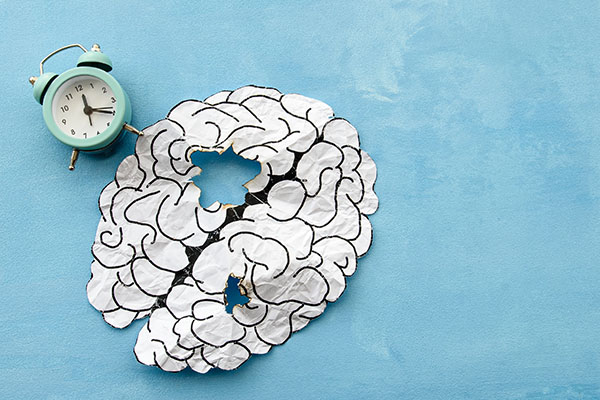© Brighteon.com All Rights Reserved. All content posted on this site is commentary or opinion and is protected under Free Speech. Brighteon is not responsible for comments and content uploaded by our users.
PSYCHO-PHARMA FRONT GROUPS: TMAP (The Texas Medication Algorithm (flow chart) Project).
46 followers
Follow
0
Download MP3
Share
Report
99 views • 01/22/2021
PSYCHO-PHARMA FRONT GROUPS: TMAP (The Texas Medication Algorithm (flow chart) Project) and its children’s counterpart, CMAP, shows the extent and insidiousness of the collusion between drug companies, psychiatrists, psycho-pharma front groups and corrupt government officials..
The Texas health department received almost $6 million in contributions from the pharmaceutical company Janssen (a division of Johnson & Johnson) and other parties to implement TMAP.
The protocol was developed with unrestricted educational grants from the following pharmaceutical companies: Abbott, Bristol-Myers Squibb, Eli Lilly, Forest, Glaxo-Wellcome,
Janssen, Novartis, Pfizer, U.S. Pharmacopeia and Wyeth-Ayerst.
Please read the article here: https://www.cchrint.org/issues/psycho-pharmaceutical-front-groups/tmap/
More information about the drugs mentioned in the video:
(If you are taking these drugs, do not stop taking them based on what you watched here. You could suffer serious withdrawal symptoms. You should seek the advice and help of a competent medical doctor or practitioner before trying to come off any psychiatric drug. This is very important.)
What are Mood Stabilizers, or Atypical Antipsychotics?
Hardly anyone had heard of the term “mood stabilizer” in 1995 when Abbott Laboratories received a license to use its anticonvulsant Depakote to treat “acute mania.” But today, the term “mood stabilizer” is well known. Psychiatrically, they are used to treat “mood disorders,” a classification of behavior characterized by intense and sustained mood shifts.
One of the main drugs prescribed for mood disorders is lithium, a mineral given in salt form naturally found in tiny amounts in water, plant, animal and human tissues.
Lithium can be very dangerous, since in order to achieve a “sedating” effect, the “therapeutic” dosage that psychiatrists must use is so poisonous that it can cause serious harm or even death.
What’s worse, the body doesn’t break down and metabolize lithium very well. To remove it from the body, the kidneys are put under great stress to eliminate it through urination.
According to medical experts, the almost inevitable result of extensive lithium use is kidney damage. Lithium is even more hazardous when too much of it accumulates in the body. Prolonged exposure to lithium can lead to permanent brain damage and death.
Lithium is marketed as Cibalith-S, Eskalith, Lithane, Lithizine, Lithobid, Lithonate and Lithotabs.
Other mood stabilizers include Depakote and Lamictal (lamotrigine). The anti-seizure drug Trileptal has also been advocated as a treatment for bipolar by a psychiatrist with financial ties to its manufacturer. In addition to lithium, antipsychotics are also prescribed children labeled with bipolar. These drugs are known to cause diabetes and life-threatening liver problems.
What are Antidepressants? Antidepressants were introduced in the 1950s.
Up until the late 1980s, there were only three types of antidepressants:
1. Tricyclics: (TCAs) referring to the three rings in the chemical structure of the drugs. Common TCAs were Adapin, Anafranil, Elavil, Endep, Norpramin, Pamelor, Sinequan, Surmontil, Tofranil and Tryptanol. 2. Tetracyclics: The name derives from the drug’s molecular structure that consists of four ring-like structures in a T-shape. These drugs include: Avanza, Remergil, Remeron, Tolvon and Zispin.
3. MAOIs: Monoamine Oxidase Inhibitors (MAOIs). Monoamine oxidase is an enzyme that has the function of getting rid of used neurotransmitters (brain chemicals) found in the gap between nerve cells. It was theorized (not proved) that too low concentrations of neurotransmitters may cause depression and MAOIs blocked the activity of this enzyme, resulting in higher levels of neurotransmitters. The drugs include: Aurorix, Manerix, Marplan, Nardil and Parnate.
ATYPICAL (NEWER) ANTIDEPRESSANTS In the late 1980s a new breed of antidepressants was introduced and promoted as having fewer side effects than older ones.
These were the Selective Serotonin* Reuptake Inhibitors (SSRIs). They were marketed as being capable of selectively targeting a chemical—serotonin—in the brain that was theorized to influence depression. The theory is that SSRIs prevent serotonin from being naturally reabsorbed and thus create continued stimulation of cells, relieving depression. (*Serotonin defined: Substance that is mostly found in the gastrointestinal tract, where it modulates the rhythmic movements kneading food through the stomach; in the cardiovascular (heart) system, serotonin helps regulate blood vessels to control the flow of blood. It also plays an important role in blood clotting and is used in the reproductive system. About 5% of the body’s serotonin is found in the brain.)
There remains no scientific evidence to substantiate this theory. SSRIs include Prozac, Zoloft, Paxil, Celexa, Sarafem, Lexapro and Luvox.
Please download your free information here: https://www.cchr.org/download-material
The Texas health department received almost $6 million in contributions from the pharmaceutical company Janssen (a division of Johnson & Johnson) and other parties to implement TMAP.
The protocol was developed with unrestricted educational grants from the following pharmaceutical companies: Abbott, Bristol-Myers Squibb, Eli Lilly, Forest, Glaxo-Wellcome,
Janssen, Novartis, Pfizer, U.S. Pharmacopeia and Wyeth-Ayerst.
Please read the article here: https://www.cchrint.org/issues/psycho-pharmaceutical-front-groups/tmap/
More information about the drugs mentioned in the video:
(If you are taking these drugs, do not stop taking them based on what you watched here. You could suffer serious withdrawal symptoms. You should seek the advice and help of a competent medical doctor or practitioner before trying to come off any psychiatric drug. This is very important.)
What are Mood Stabilizers, or Atypical Antipsychotics?
Hardly anyone had heard of the term “mood stabilizer” in 1995 when Abbott Laboratories received a license to use its anticonvulsant Depakote to treat “acute mania.” But today, the term “mood stabilizer” is well known. Psychiatrically, they are used to treat “mood disorders,” a classification of behavior characterized by intense and sustained mood shifts.
One of the main drugs prescribed for mood disorders is lithium, a mineral given in salt form naturally found in tiny amounts in water, plant, animal and human tissues.
Lithium can be very dangerous, since in order to achieve a “sedating” effect, the “therapeutic” dosage that psychiatrists must use is so poisonous that it can cause serious harm or even death.
What’s worse, the body doesn’t break down and metabolize lithium very well. To remove it from the body, the kidneys are put under great stress to eliminate it through urination.
According to medical experts, the almost inevitable result of extensive lithium use is kidney damage. Lithium is even more hazardous when too much of it accumulates in the body. Prolonged exposure to lithium can lead to permanent brain damage and death.
Lithium is marketed as Cibalith-S, Eskalith, Lithane, Lithizine, Lithobid, Lithonate and Lithotabs.
Other mood stabilizers include Depakote and Lamictal (lamotrigine). The anti-seizure drug Trileptal has also been advocated as a treatment for bipolar by a psychiatrist with financial ties to its manufacturer. In addition to lithium, antipsychotics are also prescribed children labeled with bipolar. These drugs are known to cause diabetes and life-threatening liver problems.
What are Antidepressants? Antidepressants were introduced in the 1950s.
Up until the late 1980s, there were only three types of antidepressants:
1. Tricyclics: (TCAs) referring to the three rings in the chemical structure of the drugs. Common TCAs were Adapin, Anafranil, Elavil, Endep, Norpramin, Pamelor, Sinequan, Surmontil, Tofranil and Tryptanol. 2. Tetracyclics: The name derives from the drug’s molecular structure that consists of four ring-like structures in a T-shape. These drugs include: Avanza, Remergil, Remeron, Tolvon and Zispin.
3. MAOIs: Monoamine Oxidase Inhibitors (MAOIs). Monoamine oxidase is an enzyme that has the function of getting rid of used neurotransmitters (brain chemicals) found in the gap between nerve cells. It was theorized (not proved) that too low concentrations of neurotransmitters may cause depression and MAOIs blocked the activity of this enzyme, resulting in higher levels of neurotransmitters. The drugs include: Aurorix, Manerix, Marplan, Nardil and Parnate.
ATYPICAL (NEWER) ANTIDEPRESSANTS In the late 1980s a new breed of antidepressants was introduced and promoted as having fewer side effects than older ones.
These were the Selective Serotonin* Reuptake Inhibitors (SSRIs). They were marketed as being capable of selectively targeting a chemical—serotonin—in the brain that was theorized to influence depression. The theory is that SSRIs prevent serotonin from being naturally reabsorbed and thus create continued stimulation of cells, relieving depression. (*Serotonin defined: Substance that is mostly found in the gastrointestinal tract, where it modulates the rhythmic movements kneading food through the stomach; in the cardiovascular (heart) system, serotonin helps regulate blood vessels to control the flow of blood. It also plays an important role in blood clotting and is used in the reproductive system. About 5% of the body’s serotonin is found in the brain.)
There remains no scientific evidence to substantiate this theory. SSRIs include Prozac, Zoloft, Paxil, Celexa, Sarafem, Lexapro and Luvox.
Please download your free information here: https://www.cchr.org/download-material
Keywords
FREE email alerts of the most important BANNED videos in the world
Get FREE email alerts of the most important BANNED videos in the world that are usually blacklisted by YouTube, Facebook, Google, Twitter and Vimeo. Watch documentaries the techno-fascists don't want you to know even exist. Join the free Brighteon email newsletter. Unsubscribe at any time. 100% privacy protected.
Your privacy is protected. Subscription confirmation required.





